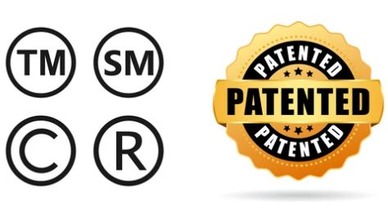Novelty & Non- Obviousness as Concepts of Patent
The fundamental principle of Patent Law in India is that a patent is always granted for an invention, which is novel, new, non-obvious, and useful. Inventive step without novelty is a myth.
Novelty and Non – obviousness is the criteria which provide different functions and add to different characteristics of intellectual product. Novelty is needed for a patent claim to be patentable and to rearrange the concept in intellectual property. The basic aim for novelty and originality is to get preserved just like nonregistered designs. For a patent primary novelty and obviousness is a key concept and an invention will not be part of it because the invention is not new and it is already known to the public, that is why the aim of the novelty requirement under patent laws is to prevent prior art from being patented gain or it has not fallen in the public domain or that it does not form part of the state of the art.
An “Invention” is defined as a new product, activity, or process involved with an inventive step and which is capable of industrial application, and it’s one of the prerequisites for granting a patent. Normally patent is related to a monopoly over the invention of the party so that others can be stopped from illegally using that invention. The legal test behind the concept of novelty is that the invention must be something that possesses “Novelty”. Novelty is an absolute condition which is a reward for the contributors of an invention.
The invention is novel when it is not in the public domain as mentioned sections 2(1) (l) and 2(1) (j) of the Patents Act highlighted a ‘New invention’ in the following way:
“Any invention or technology which has not been anticipated by publication in any document or used in the country or elsewhere in the world before the date of filing of a patent application with complete specification, i.e., the subject matter.”
In other words, an invention is must be new or novel. Presently there is a lack of cases that deal with novelty and nonobviousness so Indian courts relied on the cases of other major jurisdictions. In India, very few cases interpret the word obviousness. The concept for identifying prior publication is very important to observe the novelty of a patent which was established in the case of Farbewerke Hoechst Aktiengesellschaft Vormals Meister Lucius v Unichem Laboratories. Two basic feature for patent i.e Novelty and Utility is observed in the case of Lallubhai Chakubhai Jariwala v Chimanlal Chunilal and Co wherein it was observed that a real test for patentability is a novelty for patent and it’s essentials. In India, the test of novelty is in inclusion with new inventions. Novelty is unused and unknown information that sets a competitive advantage in a business field as a “sweet spot” for accessibility of patent.
Initially to prove that novelty exists then the necessary element is that it must fall under state of art. In India, prior use of a patent is part of the prior art. The Indian Patent Act 1970 does not define “state of the art” but through various case laws, we can refer that the state of the art means prior art, prior knowledge, and prior use all of which would infringe the patentee’s claim if carried out and it will have been anticipated. State of art is defined under the English Law it has been defined as an invention which is comprised of all matter i.e. a product, process, information about either, or anything else, which has available to the public at any time before the priority date of the invention either by written or oral description or in any other way. Moreover the concept of ‘state of art’ is the result of European/English standards of novelty.
The Novelty Test is very important for qualifying expertise in the era of patents. This is for the subject matter of invention which is based on essential features and comparing this set of features on the objects that are among the prior art. Basically, patent law centers round only two concepts one of them is a novelty and another one is a lack of obviousness. Any invention done by a person is considered as art or novel in the light of Section 2(1) (j), 13, 29, 30, 31, 32, 33, 34 of the Indian patent Act, 1970.
Patent publicly is known or considered as the prior art is not limited to published documents although it must be part of the common knowledge of the public. The novelty and non-obviousness of a patent must be observed and determined through ‘skilled in the art’ because a skilled person has experience of the field in question and he must have the necessary information for the same. That is why the concept of ‘Novelty’ formulated as a uniform test for the determination of inventive step as well as non-obviousness.
Obviousness consisting of four steps always which were observed in the case of Windsurfing International v Tabur Marine and all these tests have been reiterated by the court in Bishwanth Prasad’s case. These steps are as follows-firstly identification of inventive steps is a must in form of prior use, prior art, or prior knowledge; Secondly, the difference is needed between known matter and alleged invention by the skilled person; Thirdly consideration is important to create or observe differences to the aforesaid skilled person to the alleged invention and Fourthly to obtain the invention the degree of the invention is needed. So novelty has been accepted by all the authorities as a prerequisite of patentability.
In the case of M/S Bishwanath Prasad Radhey Shyam Vs. M/S. Hindustan Metal Industries, it was held that there must be a novelty in the application. And also observed in the case of Blakey and Co. v. Lathem and Co. is that to be new in the patent only novelty or subject matter can show the invention. Recently Delhi High Court observed the criteria of patentability as “Non-obviousness” and “Inventive- step.” The US Supreme Court regarding the aspects of non-obviousness analyzed three factors known as Graham’s factors. These factors include the scope of the prior art; the differences between the prior art and the claims moreover ordinary skills too.
The concept of the inventive step in India laid down by the Supreme Court in the case of M/s. Bishwanath Prasad Radhey Shyam Appellant v. M/s. Hindustan Metal Industries is the combination of new results. For patentability, all the improvements or the combinations produce a new result/ new article. The U.S. Supreme Court in cases of Swofford v. B & W, Inc and Graver Tank & Mfg. Co v. Linde Air Prod. Co. observed that utility and novelty both are issues of fact which leads to determining the scope of judicial review in patent litigation.
Ordinary skill is always in pari materia with the invention involved. In the case of Inc v. Jeffrey Allan Industries, it was held that to determine ordinary skill we have to consider the type of problem encountered in the art, and prior art solution of such problems. An application without any inventive step was rejected by the patent office. In the case of Bajaj v TVS, the court observed that technology entailed in the concerned patent is necessary for the closest prior art to understand that invention is obvious or not. IPAB dealt with inventive steps in the case of Enercon (India) Ltd.v. Alloys Wobben which is based on Halbury’s law of England which focuses on the test of inventive step as obvious to the person skilled in the art. All the above criteria stated that in many countries including India the validity of a patent is based on three things Invention, Novelty, and Inventive step.
Author: Rachi Gupta a student of B.B.A. L.L.B. (Hons.), Vivekananda Institute of Professional Studies, GGSIPU intern at IP and Legal Filings and can be reached at support@ipandlegalfilings.com


